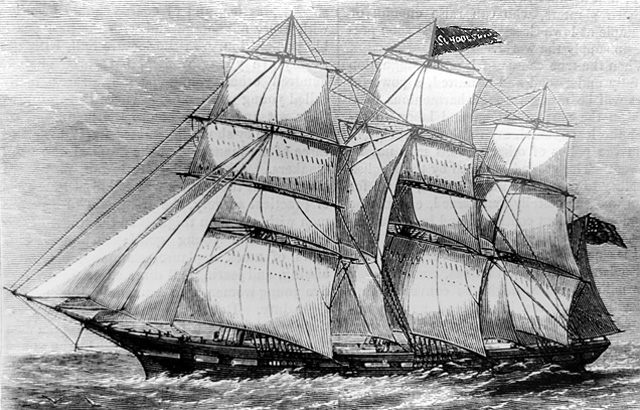|
Aspects of post-Mercury NY School Ships History
This exploration of the Hart Island reformatory ship as Fort Schuyler maritime college's ancestor need not detail in full the histories of the Board of Education/Chamber of Commerce nautical training ships St Mary's and Newport.
|
XXX

XXX |
One of the most prolific writers of his era, William Henry Rideing, who would serve as associate editor of Youth's Companion magazine from 1881 until his death in 1918, concluded an 1878 article about "The Boy Who Wants to be a Sailor" in Scribner's Monthly with words declaring
|
I advise all parents who have a salt-water sprite of a son to consult with Capt. R. L. Phythian, U.S.N., ship St. Mary's, New York City."
|
That concluding advisory paragraph opened with the following reassurances:
|
The boys of the St. Mary's belong to a respectable class and a good moral tone prevails among them. . . .
|
Why that phrase ("belong to a respectable class") from a writer of Rideing's calibre? He began his career as a writer with the New York Tribune and later was connected with the New York Times, the Springfield Republican, the Boston Journal, and Harper's Weekly, among others. He had already begun authoring adult and young peoples' books of travel, history, and adventure. Eventually they would number more than a dozen titles of fiction and non-fiction.
One need only to start reading his study on Thackeray's London to recognize Rideing as an author who crafted phrases with care, selecting words with precision and purpose.
Given his experience as a New York journalist, Rideing was well aware the school ship previously on the scene had been that reformatory-with-sails. Its boy crews -- in the prevailing opinion of the day -- clearly did not "belong to a respectable class."
Since the Hart Island nautical school ship formally shut only about two years earlier, a case can be made that Rideing was aware memory of it would still be fresh in the minds of many of his readers and that he employed the phrase in question to distinguish the St. Mary's from the Mercury without specifically mentioning the latter.
For Chris Ripp's wonderful "Youth's Companion" website, click the above image. Use your browser's "back" button to return.
Note in lower left corner of nameplate image the name of the publisher: Perry Mason. As a child, Erle Stanley Gardner regularly read the magazine. As a writer, he "borrowed" its publisher's name for his fictional attorney-detective.
To access the Rideing advisory to parents of "a salt-water sprite of a son," click the article's title: "The Boy Who Wants to Be Sailor."
|
| But some aspects of maritime education in New York after the demise of the Public Charities and Correction (PC&C) program are pertinant to appreciating the relevance of the earlier program to what followed it.
A few short years after the New York Nautical School (NYNS) was established by legislative fiat in 1873, defects in the Board of Education's approach to managing the school ship became evident, as did frictions from the built-in tensions of the program's troika governance.
Bd. of Ed. member vs. U.S. Navy
In 1878, the Navy agreed to the Bd. of Ed. request to extend Commander Phythian's stay as the St. Mary's first shipper until graduation of the senior class.
It also expressed willingness to accept any Navy Commander the board would designate as Phythian's successor.
The Navy had previously named Cmdr. Henry Erben, apparently without having sought Bd. of Ed. in-put.
Despite the Navy's compliant attitude at least one Bd. of Ed. Commissioner, Rufus G. Beardslee, appeared spoiling to do battle with that military service.
He portrayed acceding to the Navy's designation of Erben as amounting to surrender by the board.
| HENRY ERBEN: CIVIL WAR & SPANISH AMERICAN WAR |
|
XXX
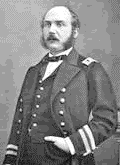
XXX |
Left is image of Henry Erben from his page on the Antietam on the Web site. The page recounts his Civil War service. The image right is from his page on the NavSource Naval History website. The page recounts how he came out of retirement during the Spanish American War to command the Patrol Fleet guarding the coast from Texas to Maine. The page also shows images of the Fletcher class destroyer named for him.
|
XXX
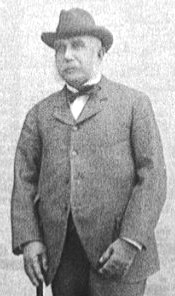
XXX |
Each image is linked to its respective source page.
Click to access. Use browser's "back" button to return. |
| Yes, the Navy had made ship available to the Board under a federal law intended to promote such nautical training programs.
Yes, the half-dozen officers and two dozen or so adult crewmen on the ship were Navy personnel made available for the same purpose.
Yes, both the ship and staff had been made available by the Navy to the Board in response to requests by the state's governor acting on behalf of the board that, in turn, was acting to bring itself into compliance with the Legislature's mandate that the board establish the nautical school.
Nevertheless, according to the NYT Dec. 19, 1878 story, Beardslee said he would rather end the entire program than have the board cede its control to the Navy.
|
XXX
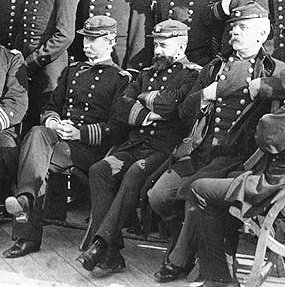
XXX |
|
In this cropped extract from a larger photo of USS Trenton officers, taken about 8 years after he left the St. Mary's, Capt. Robert L. Phythian, the commanding officer, is seated left. Also in the 1886 photo is USMC Capt. Henry A. Bartlett, seated right. The identity of the officer seated center is not available.
About four years after the USS Trenton photo was taken, Phythian was appointed Superintendent of the Naval Academy. He served until Nov. 15, 1894. In July of 1897, Commodore Phythian annouced his retirement after 35 years of Naval service. He was superintendent of the Academy's Naval Observatory at the time of the announcement.
For the full Trenton photo image on Gary P. Priolo's NavSource Naval History website, click the image. Use your browser's "back" button to return.
|
| Therefore, Beardslee argued, the Navy's word on accepting the board's choice of a successor to Cmdr. Phythian must be put to an immediate test by rejecting Erben and by the board naming its own pick.
Ultimately, Erben did succeed Phythian. His term of service as the school's second superintendent was 1879-1882. He later served as commandant of the Brooklyn Navy Yard and still later was placed in command of the U.S. Navy's Europen station. Rear Admiral Erben retired in 1894 after 46 years naval duty.
Bd. of Ed.
Commissioners
Wanting to
Jump Ship
Also in 1878, some NYC Board of Education members and committees began to speak openly about asking state lawmakers to remove from the board any responsibility for the school ship.
These city education commmissioners regarded it as an unnecessay, unwanted and very expensive burden.
A NYT Jan. 31st story reported these recommendations to the board by its committee for finding economies and reducing expenditures.
|
. . . With reference to the Nautical School, the committee [said] that it is the unamious opinion of the committee that it is no more in the province of the board to teach, as a specialty, the art of seamanship than it is to teach any other art or trade; that while it may properly teach the "science and practice of navigation," as required by law, and the elementary studies that precede these, it is not the business of the board to support the pupils who may be engaged in such studies.
A less expensive organization on shore is suggested as a substitute, and that the Legislature be requested to repeal the act establishing the present school. . . .
|
After three board members objected to that report receiving immediate consideration, it was tabled.
Shipbuilder Webb's Wack at Board's School Ship
That same year the board's school ship program was denounced by the Council of Political Reform which had been formed in 1870 by leading NYers to fight corruption and extravagance in government generally but particularly associated with Boss Tweed at the group's founding. The statement was part of a report, issued at its Jan. 28 meeting and quoted at length in a NYT Feb. 4 story:
|
XXX
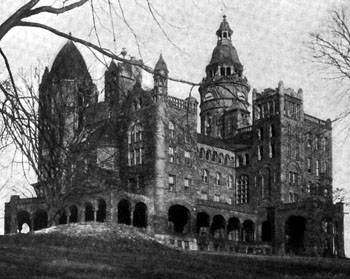
XXX |
|
Webb Academy of Naval Architecture and Marine Engineering, Fordham Heights, the Bronx (circa 1899), founded by master shipbuilder William Henry Webb who led the group critical of school board's school ship. Click image for source, Marine Engineering July 1899 article. Use browser's "back" button to return.
|
|
The New York Nautical School is another example of the public school system of this City, in our opinion, wholly foreign to the true idea of providing public instruction . . . .
Thirty-five thousand dollars are asked this year to maintain a ship, to give instruction to boys in the practical duties of seamen.
If such an arrangement and expenditure are justified, your committee can see no reason why this City is not called upon on the same considerations to furnish a trade or profession to all the youth of this City.
|
|
XXX
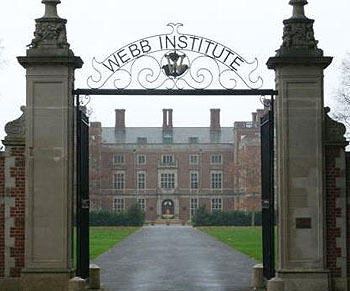
XXX |
|
The academy, founded by shipbuilder William Henry Webb, is now Webb Institute in Glen Cove, L.I. Click image for source page on institute's website.
|
| Today the notion of public school vocational education has wide acceptance in principle, if not always as practiced.
But back in the era under consideration the province of tax-funded public instruction was seen as more limited.
The public schools were to provide the proverbal three Rs -- reading, 'riting and 'ritmatic -- plus some knowledge of sciences, literature and the arts.
In other words, the basics for those children whose families could not afford to send them to private day schools, much less send them away to a boarding school.
Yet, the latter kind of school was how the St. Mary's was viewed by critics: a boarding school with sails, except the taxpayers were being forced to pay the tuition tab.
|
XXX
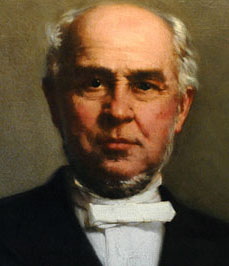
XXX |
|
Even though an active member of the Chamber of Commerce since first joining in 1851, William Henry Webb (above) took issue with the Chamber/Board of Education nautical school.
Thrice offered major party nomination (once by the Democrats, twice by the Republicans), he refused each time. But Webb did devote considerable time to civic affairs, including 14 years service as president of the Council of Political Reform, the successor organization to the Committee of 70 that played such a key role in bringing down the Tweed Ring.
Besides steam-power related innovations in ship building and engineering, his legacy to the state and nation also includes the Institute that bears his name.
Webb financially endowed the academy with sufficient funding that since its founding in 1889 it has been able to "furnish to any young man, a native or citizen of the United States, who may upon examination prove himself competent, of good character and worthy, free and gratuitous education in the art, science and profession of shipbuilding and marine engine-building, both theoretical and practical, together with board, lodging, and necessary implements and materials while obtaining such education."
The only full-tuition scholarship private undergraduate program of its kind in the country, Webb Institute is a unique, top-ranked undergraduate institution offering one academic option: a double major in Naval Architecture and Marine Engineering.
The original site was about fourteen acres in Fordham Heights on the easterly bank of the Harlem river, just north of the University of New York. The current site in Glen Cove on Long Island Sound -- the former Braes estate of Charles Pratt's son Herbert (the family associated with Pratt Institute) -- was purchased in 1945.
Each of the three Webb-related images above (the academy, the institute and the founder) is linked to its web source. Click to access more. Use your browser's "back" button to return.
|
| Aside from a very nominal amount initially, the families of the nautical students paid nothing for them to live and learn aboard the vessel during the two-year course of studies.
Many of the students were not from poor families and not from the City. Their parents or other relatives had "connections" and knew how to "work the system."
A board controversy over the St Mary's in 1879 brought to light that only 71 of the 110 boys aboard were city residents.
In reaction, some promoters of public education in NYC became foes of the early New York Nautical School.
They regarded the school ship as serving the special interests of international merchants, caterering to connected elites, and siphoning away funds that should have been going to fill educational needs of children in the general populace.
President of the Council of Political Reform, William Henry Webb, who signed off on the report critical of the board's nautical school, could hardly be counted as someone unsupportive or unsympathetic to educational endeavors in matters of a nautical nature. Recognized as the master shipbuilder of his time, he founded and funded what has become the leading tuition-free school for naval architecture in the state (and perhaps the country) -- the Webb Institute, orginally in Fordham Heights but now situated in Glen Cove, L.I.
Mayor, Bd. of Ed. Head Faulted Nautical School
A decade later, lack of enthusiasm for the school ship continued to evidence itself on the education board and elsewhere in the civic arena. A NYT Jan. 12, 1888 story about a board meeting the previous evening quoted its unanimously re-elected president J. Edward Simmons as declaring he considered the nautical school an "expensive and not altogether successful" experiment. He noted the school ship could accommodate about 130 pupils, but enrollment and attendance had been running about 50 percent of that.
Simmons was no proponent of the board having to operate the school ship.
But a little more than a year earlier the board president had found himself in the uneviable position of having to defend the board's funding request for the ship at an appropriations hearing: $25,000 plus $2,550 for repairs.
The NYT Dec. 15, 1886, reported this exchange with reform Mayor William R. Grace:
|
XXX
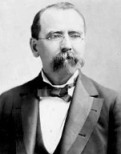
XXX |
|
Willam R. Grace, NYC mayor 1881-2 & 1885-6.
|
|
|
XXX
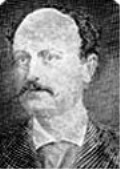
XXX |
|
J. Edward Simmons: 9 years on Bd. of Ed., 5 of them as president.
|
|
. . . Mayor Grace expressed it as his opinion that the nautical school was a mere pet of a few people.
He did not believe in spending much money on it.
President Simmons said the school was established by law, but if it was not to be run properly, it might as well be wiped out.
"It's one of those things we can't wipe out," said the Mayor . . .
|
Mayor Grace's expressed lack of enthusiasm for the Chamber/Board of Education nautical school could hardly be attributed to disinterest in maritime matters. He was, after all, THE W. R. Grace, whose merchant steamline company seemed in the late 19th century virtually to own the waterways "between the Americas."
As a boy, he had run away from home in Doublin to start a seafaring life and served as a cook's helper aboard a ship to NY.
|
XXX
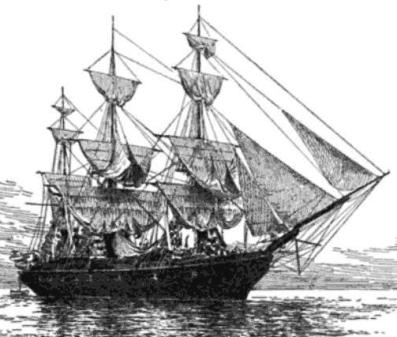
XXX |
|
Sketch entitled "The School Ship St. Mary's" from Ch. 23 of Darkness and daylight; or, Lights and shadows of New York life published in 1900 by A. D. Worthington & Co. Click to access via Google Books. Use browser's "back" button to return.
|
| Once here he took what maritime jobs he could pick up and worked in waterfront eateries and lodging houses.His father tracked him down, got him home, and found him a position in a ships' supplies firm. That was the start of W. R. Grace combining his yen for the sea with his ken for business. The rest is maritime history.
Likewise, school board president Simmons' ambivalence about the the Chamber/Board of Education nautical school ship could hardly be attributed to disinterest in maters of commerce. He was, after all, president of the Fourth National Bank and a long-time active member of the Chamber of Commerce. He would become its president as well as president of the New York Stock Exchange and the New York Clearing House.
Chamber: Board Should Walk the Plank
Not only did some city education commissioners early in the program's history want their board to jump ship, but later on the Chamber of Commerce's nautical school council also wanted the board to walk the plank, so to speak.
In the Chamber's Council 1890-91 report, forwarded to the New York State Superintendent of Instruction (a position roughly equivalent to State Education Commissioner), its members commented rather pointedly:
|
XXX
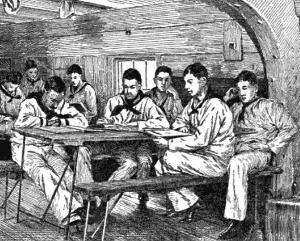
XXX |
|
Sketch entitled "Boys' Schoolroom Between Decks on the St. Mary's" from Ch. 23 of Darkness and daylight; or, Lights and shadows of New York life published in 1900 by A. D. Worthington & Co. Click to access via Google Books. Use browser's "back" button to return.
|
|
. . . All that pertains to [the School's] management, and the selection of its officers, is wholly under the charge and supervision of the Board of Education.
Your Council are inclined to the belief that if the management of the School could be transferred to the ship-owning interests of this port, its sphere of usefulness would be largely extended and greater results be attained.
It is not to be expected that the Committee of the Board of Education, ordinarily speaking, would be as well versed in the necessary requirements as a Committee appointed by this Chamber; besides, more individual interest would no doubt be given than at present.
A greater length of sea service (often advised) would be more desirable, as well as other rules and regulations that should be enforced, which at present would not be consistent with the law governing the schools of the City. . . .
|
This Chamber call for the Legislature to dump overboard the Bd. of Ed.'s control of the nautical school came as enrollment was down to 72, the graduating class was down to 16 and more than a dozen had "deserted."
At this same time, the St. Mary's skipper revealed in a farewell report that graduates had problems finding maritime employment.
|
XXX
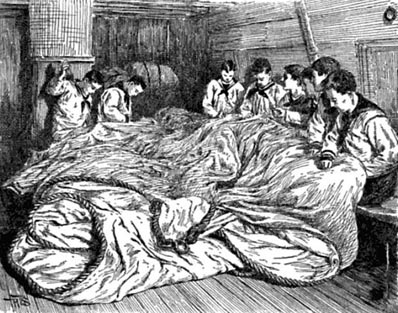
XXX |
|
Sketch entitled "The Sail-Making Class on the St. Mary's" from Ch. 23 of Darkness and daylight; or, Lights and shadows of New York life published in 1900 by A. D. Worthington & Co. Click to access via Google Books. Use browser's "back" button to return.
|
| That revelation ran contrary to the propitious prospects consistently portrayed in the newspapers: that jobs at sea awaited the NYNS students upon receipt of their dipolmas.
Remember
Rap on
Mercury:
Too Few
Seamen
Remember that one of the raps against PC&C's school ship was how few seamen it actually generated. But the Bd. of Ed./C. of C. school ships appeared not do that much better number-wise.
In Mercury's last full year of operation, 1875, some 28 youths entered naval service. In St. Mary's last year of operation, 1907, some 35 graduated but how many actually entered upon a life at sea was not reported, if known.
Some years the number receiving dipomas was lower (for example, 29 graduated in 1888); other years higher (for example, 59 in 1876). But the number of graduates actually becoming seamen remained in dispute. Firm figures seem hard to find.
Typical of the claims made on behalf of St. Mary's grads gaining maritime employment soon after their receiving diplomas was one in the NYT's Nov. 16, 1877 graduation story:
|
. . . only a few of them (1876 grads), who did not wish to follow a seaman's life, have not now good berths in the merchant marine, a number of them having already risen to the rank of mate.
|
|
XXX
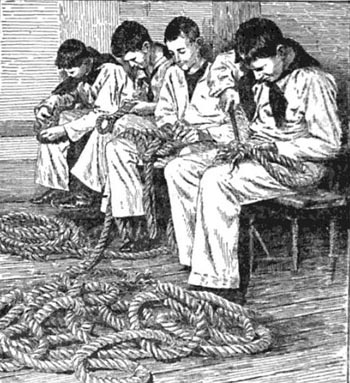
XXX |
|
Sketch entitled "Learning to Splice Ropes on the St. Mary's" from Ch. 23 of Darkness and daylight; or, Lights and shadows of New York life published in 1900 by A. D. Worthington & Co. Click to access via Google Books. Use browser's "back" button to return.
|
| This basic mantra was repeated in various forms down through the decades on occasions appropriate for such boosterisms.
St. Mary's Captain:
Where
Are
All
Those
Sea Jobs
for
Grads?
But in his November 1890 farewell report to the Chamber of Commerce as Superintendent of the New York Nautical School (NYNS), U.S. Navy Commander Arent Schuyler Crowninshield revealed realities reflecting a far less sanguine picture of the situation:
|
. . . My first suggestion is that the School Ship St. Mary's should make a winter cruise as well as a summer cruise . . . .
You cannot make seamen out of boys simply by their living on board a ship, especially if that ship is tied up to a wharf for six or seven months . . .
|
XXX
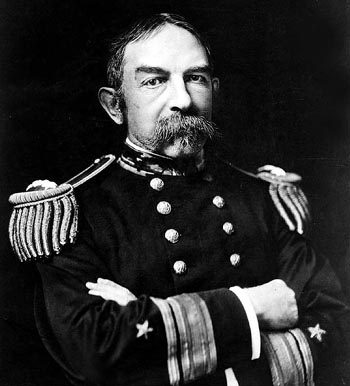
XXX |
|
The Rear Admiral Arent S. Crowninshield photo above was taken circa 1897 when he was Bureau of Navigation chief. He served as the St. Mary's commander from 1887 to 1891.
A native NYer, he came of a Navy family. His grandfather Jacob Crowninshield had been appointed Jefferson's Navy Secretary and his granduncle Benjamin Williams Crowninshield had been Navy Secretary under Madison and Monroe. Upon graduating the Naval Academy in 1863, Arent saw Civil War action aboard the steam sloop Ticonderoga
.
Click to access U.S. Naval Historical Center photo. Use browser's "back" button to return.
His wife authored several critically acclaimed fictional works with naval and maritime themes, often set in locales reflecting Arent's assignments. For more on that, click
Mary Bradford Crowninshield.
|
| the boys would be more contented, and would acquire as much knowledge of seamanship in one year as they now do in two. . . .
Another suggestion . . . is the necessity of providing, by some sure means, places for our graduates in our merchant marine. . . . .
More or less uncertainty, not to say difficulty, has been experienced by our graduates in obtaining these situations.
Now, if they are unable to procure places in our Merchant Marine, what is the use in their attending the Nautical School? Why, in fact, should it exist?
In my opinion, every owner of an American square-rigged vessel should be compelled, by Act of Congress, to receive on board, as a portion of her crew, two or more boys who have graduated from this Nautical School, or from any other similar school belonging to any other City or State.
The certainty of this employment would stimulate and encourage those engaged in this Nautical School work; it would be the means of raising the system on to a higher plane than it has ever before occupied, placing this and similar schools in closer relations with the general government, thus giving our boys a real object to work for; something they have really never had.
|
The NYT offered its opinion in a Dec. 28, 1890 editorial headlined:
|
. . . SCOPE OF THE MARINE SCHOOL
Can it not Profitably Be Made
Available for the Whole State?
--------
. . . . The comparatively few graduates the last year or two shows plainly that a more popular system is needed, and the scope of the marine school . . . should be extended to embrace a wider district than New York City . . . .
|
The NYT took note that youths in areas adjacent to fresh water ports in other parts of the state might well be interested in attending the nautical school if enrollment were opened to them.
Ten months later the issue surfaced in newsprint again.
|
XXX
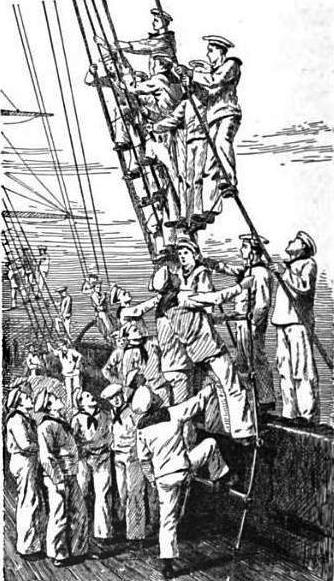
XXX |
|
Sketch entitled "'Up Aloft.' A drill scene on the St. Mary's" from Ch. 23 of Darkness and daylight; or, Lights and shadows of New York life published in 1900 by A. D. Worthington & Co. Click to access via Google Books. Use browser's "back" button to return.
|
| An Oct. 22, 1891 NYT story about Board of Education discussion of a proposed appropriation of $10,000 to financed a St. Mary's winter cruise, the money coming from the public schools system's unexpended funds, set off "the old-time cry that the school ship was something that should not be maintained by the City of New-York, but by the State or National Government."
Randolph Guggenheimer and other board members (commissioners) noted that every graduate represented a cost to the City of $2,000. Earlier in the day, some board members had attended ceremonies aboard the ship for the graduation of the 20-student Class of 1891. Recognizing that state law imposed the responsibility for the ship on the City, the resolution in favor of the winter cruise appropriation was resignedly adopted.
The Postal Subsidy Act of 1891, whose primary goals went far beyond promoting seamanship training, nevertheless included provisions requiring ships that won contracts to carry U.S. Mail to hire Americans as officers, as trainees and among its crew. The nautical ship proponents hoped that would prompt increased hiring of St. Mary's graduates. Those arguing for a state takeover of the school ship contended only such a move to would enable the school to keep up with the increased demand for its graduates.
During the 1892 appropriation proceedings the following exchange -- on increasing the ship's appropriation from $22,500 the previous year to $37,690 -- took place between school board member Charles Strauss, Mayor Hugh J. Grant and head of the city's Tax and Assessments Department, Edward P. Barker, according to a NYT story Christmas Eve, 1892:
|
|
XXX

XXX |
|
Hugh J. Grant, NYC Mayor, 1889-92.
|
|
Mr. Strauss . . . said the law compelled the Board of Education to use the ship . . . [which] was unseaworthy and must be fitted up.
President Barker of the Tax Department said the St. Mary's
was a barnacle in the school system. . . .
Then the board [of Estimate] allowed $20,000 . . .
"The vessel can never go to sea, then.
"We must keep her tied up at the dock," said Mr. Strauss.
"For Heaven's sake, do so," said the Mayor.
"That's just where it belongs."
|
Four days later, another dust-up over the school ship occurred at an education board meeting. According to a Dec. 29 NYT story, Commissioner Strauss called the $20,000 "wholly inadequate," and Commissioner Knox objected that use of that kind of language against the Board of Estime was "uncalled for."
Strauss, an indepedendent Democrat locally with Republican sympathies nationally, and Knox, a leading Tammany lawyer, appeared ready to do intense verbal combat when cooler heads prevailed and discussion was put off to await the school ship committee's recommendations about the budget reduction.
|
XXX
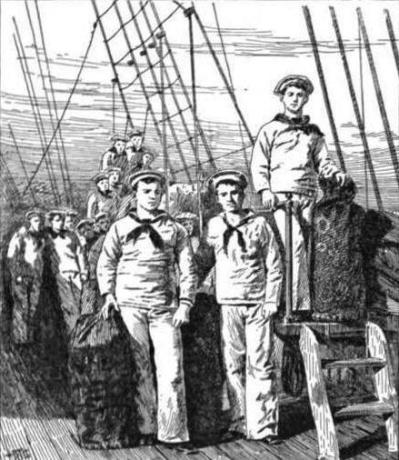
XXX |
|
Sketch entitled "Ready for Sea. A Scene on the St. Mary's" from Ch. 23 of Darkness and daylight; or, Lights and shadows of New York life published in 1900 by A. D. Worthington & Co. Click to access via Google Books. Use browser's "back" button to return.
|
| Governor
Flower's
Veto of
State
Takeover
Bill
An April 17, 1893 NYT editorial bemoaned the prospect that Gov. Roswell P. Flower apparently was about the veto the bill to have the state take over the nautical school.
The bill, backed by the Board of Education, had passed after its chief sponsor, leading Democrat Jacob A. Cantor from NYC, amended it -- at the suggestion of leading Republican George Z. Erwin from St. Lawrence -- to place the commission, that would be set up to run the school, under the chairmanship of the State Superintendent of Public Instruction.
Vetoing the bill would, the edit proclaimed, spell the end for the St. Mary's and require NY youths interested in maritime training to apply to Massachusetts or Pennsylvania state-funded nautical schools.
On May 10, Gov. Flower indeed vetoed "Senate Bill No. 39, To Establish a State Nautical School." The veto message, available in the Public Papers of the Governor 1894, reads:
|
|
XXX
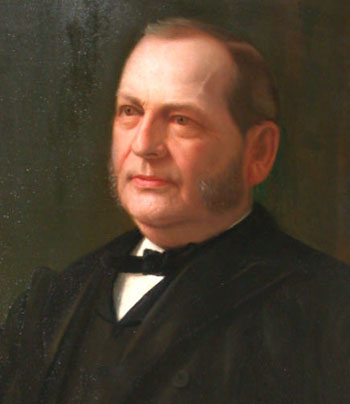
XXX |
|
The rejection by Gov. (and former Congressman) Roswell P. Flower of the ship school takeover by the state reflected his general frugality about spending taxpayers' monies, which may also account for his presiding over the state's complete emergence from debt.
He was generous with his own money, gained on Wall Street. He founded/funded Flower Hospital in Manhattan in 1889 and endowed many worthy institutions. He was once quoted saying he aimed to donate away most of his money so there wouldn't be so much left for his heirs to fight over.
In Jefferson County, Roswell learned wool carding and cloth making at the family mill and farming on its acreage elsewhere in Theresa. His widowed mother kept the mill and farm going after his father died when Roswell was 8. With 8 siblings, he learned how the fatherless family made do with all sorts of economies, a lession that stayed with him in public life.
Click image to access veto messagoe among the governor's papers. For a bio, click Biography of Roswell Pettibone Flower - Watertown, New York. For a look at Watertown's library named for him, click Roswell P. Flower Memorial Library History. For history of a Cornell University library bearing his name, click Veterinary Library Overview and History.
Use browser's "back" button to return.
|
|
This proposed transfer to the State of the nautical school now maintained by the board of education of the city of New York is urged upon the ground of enlarging the usefulness of the school and giving boys from all parts of the State an opportunity to avail themselves of the benefits of a nautical education.
While such an extension of the advantages of this school would be valuable, I doubt whether they are sufficient to justify the State in assuming control of an additional instutition.
The State has at present about as many institutions of an educational nature as it can well care for, and no new responsibility should be assumed except where it is for the unmistakable good of the State and the great majority of its people.
Moreover the bill provides for a perpetual appropriation of $40,000 a year.
|
Despite the dire predictions that vetoing the takeover bill would sink the nautical school, the training ship program continued. The St. Mary's, tied most of the year to the 24th St. East River pier, still kept instructing its live-aboard students about seamanship, occasionally taking them on cruises to learn by doing.
Jacob Riis' Son Jumped "Harsh" Ship
"Desertions" also continued. Most occurred without attracting much press attention. Perhaps the most publicized case happened during the summer of 1899 cruise when John Riis, 17-year-old son of famed photo-journalist and reformer Jacob A. Riis, "jumped ship" during the St. Mary's stop-over at Gibraltar.
|
XXX

XXX |
|
Sometime after his adventure aboard and "deserting" the St. Mary's, John Riis (1882-1946), a son of famous photo journalist and social activist Jacob Riis, went West as a young man, served in the then new U.S. Forest Service from 1907 to 1913 as a ranger and forest supervisor on national forests in Utah, California, and Oregon.
John then returned to the East to become a respected Richmond, Virginia, newspaperman. In 1937 he shared his years as a pioneer forest ranger in his Forest Service classic, Ranger Trails, (Dietz Press, Richmond, Va.), with an introduction by Gifford Pinchot, the U.S. Forest Service's founding chief and two-term governor of Pennsylvania.
Wilderness Associates, based in Bend, Oregon has reprinted Ranger Trails with a prologue and an epilogue by Martha Riis Moore and Les Joslin.
A retired U.S. Navy commander and former U.S. Forest Service firefighter, wilderness ranger, and staff officer. Les Joslin founded Wilderness Associates as a "private partner" in the preservation and interpretation of America's rich National Forest System and National Wilderness Preservation System.
NYCHS apreciates his providing for this presentation the book cover image from which the one above, featuring John Riis, was derived. Click it for more info. Use browser's "back" button to return.
Below is a Library of Congress image of pioneer photo journalist and housing reformer Jacob Riis, author of How the Other Half Lives. His son, John, gave his "sea adventure" interview to the NYT in Richmond Hill, Queens, where the Riis family lived.
Click the image below to access Richmond Hill Historical Society's website menu of web pages about Jacob Riis and his family in that community. Use browser's "back" button to return.
|
|
XXX
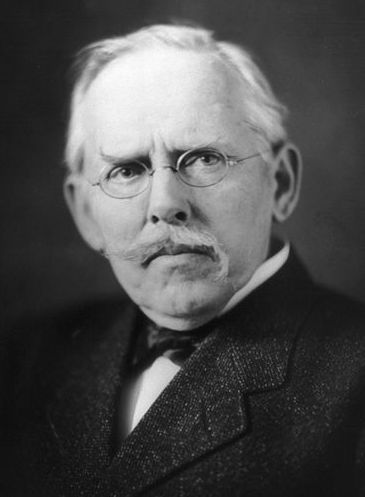
Jacon Riis |
|
Interviewed afterwards at the Riis family home in Richmond Hill, Queens, young Riis explained that originally he and three other students aboard had planned to quit the school ship at Lisbon earlier during the cruise, because of what they regarded as poor food and harsh discipline under Capt. William H. Reeder. But no steamers bound for home were available at Lisbon.
At Gibraltar, he and Kenneth Clark, son of Consolidated Gas. Co. director W. J. Clark of Newtown, Queens, decided not to return to the ship from a shore leave visit. The British Governor refused to order the boys to reboard the St. Mary's. Through the U.S. Consul, they obtained passage home aboard another vessel.
Research found no indication of any official follow-up to John Riis' complaint that school ship skipper, Capt. William H. Reeder, had kept him six hours in the rain up in the crow's nest or masthead for not having studied his navigation lesson.
A decade earlier, charges of disciplinary excesses by an allegedly drunk and enraged executive officer at least resulted in the start of an official inquiry by the Board of Education before the Navy detached that officer from the St. Mary's and placed him on a year's leave of absence.
Thereafter, the case -- to which the NYT had devoted three stories in August 1889 (the 11th, 22nd, and 23rd) -- suddenly vanished. Indeed, the officer's detachment and leave were buried in a routine Sept. 29th listing of military assignment changes, without any reference to the brutality allegations.
In the aftermath of John Riis' complaints aired in the NYT Aug. 13, 1899 story (but apparently not filed as formal charges), Commander Reeder continued to skipper the school ship until September 1901 when the Navy detached him from that duty and "ordered" him "home to wait orders." His wife, daughter of Rear Admiral Clarke Wells, had died Feb. 10 that year aboard the school ship, then at the Brooklyn Navy Yard. In 1902, he was assigned command of the Navy's own training vessel, the Hartford.
Herald ex-Editor Tried to Re-engage C. of C. in Ship
In February 1903, school board Commissioner Thomas B. Connery, formerly editorial manager of the Herald, sought to re-engage the Chamber of Commerce in the operation of the nautical school, especially since the Navy had lessened its participation too.
A Feb. 8 NYT story quoted him as saying:
|
St Mary's is over 60 years old . . . . She ought to be replaced by a . . . . vessel combining steam and sail. The Navy . . . has no other vessel to spare . . . [and] no naval officers to spare for detail as instructors as formerly. . . .
I have a plan . . . but I am not sanguine of success . . . to appeal to . . . the Chamber of Commerce to present a suitable ship
In theory the chamber is supposed to take part in the regulation of our Nautical School. But for years it has been all in theory. . . .
|
A few meetings of Bd. of Ed. and C. of C. officers were held, but little change in the situation emerged in subsequent newsprint.
1906-07: Transformation from Sail to Stream & Sail
|
XXX
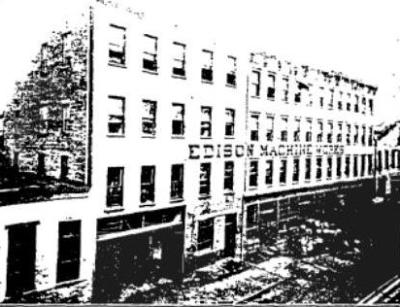
XXX |
|
The NYT described John C. Hatzel (image below right), who redesigned uniforms for St. Mary's boy crews, as a contractor and an alumnus of the school ship. He was that but quite a bit more.
Hatzel, in fact, was a pioneer in establishing the field of electrical contracting. He had worked with Thomas Edison in the Edison Machine Works (above), at 104 Goerck St near Mangin St. on the Lower East Side, designing and making the machinery to produce the electicity for the applications, such as lighting, the principles of which had been tested and proven at Menlo Park.
Hatzel then went across the country representing Edison in the western states, becoming president of Western Edison Co.
Eventually, he returned to NY and, with a partner Joseph Buehler, set up an electrical contracting business.
Yes, Hatzel was an alumnus, and more. He was a leader in the St. Mary's alumni association and was eventually appointed one of the nautical school's governors.
A member of the Chamber of Commerce, Hatzel was a top officer in a number of the eletrical industry organizations of his day, often president or vice president. Bio info appeared in the August 1914 issue of Lighting Journal in which a front page editorial (image below) about "Electrical Contacting Opportunities in the Lighting Business" by Hatzel appeared with his photo and signature.
Click his head & shoulders image or his signature image, both above right, to access his bio notes.
Click the "Lighting Journal" nameplate image below to access Hatzel's article and images.
Click the Edison Machine Work sketch (above) for the Hatzel mention on Page 965 in Menlo Park Reminiscences by Francis Jehl.
The 104 Goerck St. scene sketch (above) appears on Page 957.
For an interesting note on that locale, click the following quoted title: "Mangin-Goerck Plan.".
Use browser's "back" button to return.
|
|
XXX

XXX |
| Mark down the Years of Our Lord 1906 and 1907 as together constituting a significant turning point in the New York Nautical School's sea saga. A number of developments happened in those years to start transformation of its cruises from sail-only to steam-and-sail. It started modestly enough -- with a change of uniform -- but grew into a change of attitude, a new spirit of determination.
In February 1906 St. Mary's student sailors began sporting their own cadet uniforms, instead of an imitation sailor garb. The caps bore "New York Nautical School" in gilt lettering. The new look came about because an alumnus, John C. Hatzel, Class of 1877, listened to a friend's young son complain about the verbal slights he and other St. Mary's boys had to endure about their attire when they visited an American port city like New London which also played host to lads from other training ships. The boy said he and his school shipmates thought well of the cadet-like uniforms worn by the boys from Massachusettes' training ship, the Enterprise.
Hatzel, a contractor, said the school board nautical committee members responded favorably to his idea for a new uniform design.
Perhaps they did so partly as a way to distance their students in the public's mind from Charities and Correction's reformatory ship.
A Feb. 8 NYT story quoted the contractor as saying:
|
People, generally speaking, always connect the schoolship St. Mary's with a reformatory. A way back in the '60s, when the Mercury was then in use, it was a sort of a reformatory, but that has all passed away."
|
In the latter part of April 1906, the St. Mary's began what had been planned as its last spring-summer cruise. A July 14 NYT story about the voyage said:
|
. . . . [A]fter several weeks in Long Island Sound and along the New England Coast, the St. Mary's started for Europe, the understanding being that upon her return, she would be put out of commissions, her place being taken by a newer craft.
|
|
XXX
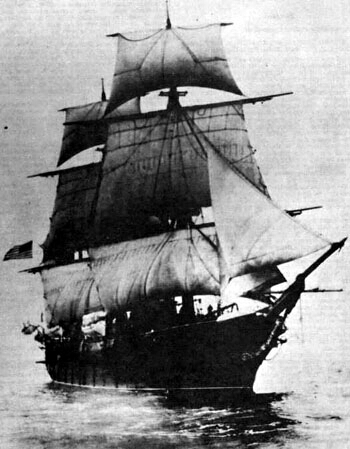
XXX |
|
A screw sloop of war, the Hartford (above) was launched Nov. 22, 1858 at the Boston Navy Yard. She saw much action in the Civil War
In 1882, as Captain Stephen B. Luce's flagship of the North Atlantic Station, Hartford visited the Caroline Islands, Hawaii, and Valparaiso, Chile, before arriving San Francisco March 17, 1884. She then cruised in the Pacific until decommissioning Jan. 14, 1887 at Mare Island, Calif., for apprentice sea-training use.
On Oct. 2, 1899, she recommlssioned, then transferred to the Atlantic coast to be used for a training and cruise ship for midshipmen until Oct. 24, 1912 when she was transferred to Charleston, S.C., for use as a station ship.
For more on the Hartford, click image above to access its Naval Historical Center web page.
Use browser's "back" button to return.
|
|
Whatever may have been the basis for that "understanding," the story did not spell out. Subsequent stories that year indicated nautical school officials and supporters were seeking the "Hartford" from the Navy which insisted neither that ship nor any of its other vessels was available. So from whence was coming the "newer craft" mentioned in the story?
Both the NYT July 14th story about the cruise and an earlier one (July 10th) reported the death of one of the students. Irving Hendricken of Queens died of pneumonia attributed to fatigue and exposure during heavy gales June 12 to June 19th. He was buried at sea while the storm still raged.
Richard B. Aldcroft, appointed Board of Education nautical school committee chairman Feb. 14, 1906, proposed in late September that the Board of Estimate appropriate $300,000 for a new ship to replace the St. Mary's. A NYT story Dec. 29 quoted him to the effect that while the ship was not yet unseaworthy, it was "fast becoming so." The school board tabled the proposal.
United Front for Replacement Ship
In an Oct. 5, 1906 story about nautical school commencement exercises, the NYT reported that the Board of Education, the Chamber of Commerce and the Maritime Association plan a united effort to induce President Roosevelt to have the Navy loan NY the Hartford so that the St. Mary's could be retired. If that effort were to fail, the school board was to ask the Board of Estimate for $300,000 for a replacement ship. If that too failed, then a public subscription campaign would be launched.
In an Oct. 7, 1906 NYT interview, the then New York Nautical School ship skipper, Capt. G. C. Hanus challenged a Board of Supervising Inspectors' regulation requiring any applicant for Second mate's license on an ocean or costal steamer to be 21 and have two years experience as a quartermaster or watch officer:
|
This is a miserable ruling, which is driving the graduates of this school ashore . . . . They desert the sea and stay on land, where they can find better employment for their minds.
|
|
XXX
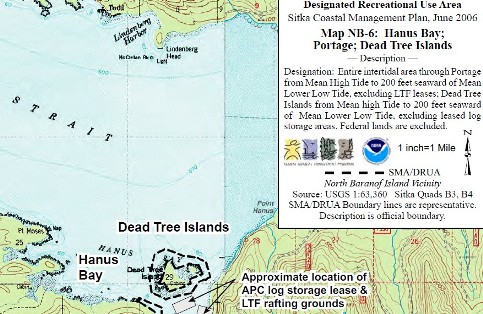
XXX |
|
Hanus Bay, depicted in the Peril Strait/Baranof Island map section above is one of the locations in Alaska named after Master (soon thereafter Lieut.) Gustav Charles Hanus, USN. Others include Hanus Islet, Hanus Point, and Hanus Reef. He was a coastal survey naval officer assigned to southeastern region of that territory in 1879-80, and mapped much of the Alexander archipelago That was 22 years before he became St. Mary's captain.
For full map, click image above.
Use browser's "back" button to return.
|
| The story that quoted Hanus' camplaint concluded with a response from an unnamed Supervising Inspector who pointed out the St. Mary's was exclusively a sailing ship and its grads had no at-sea steamer training.
During the school ship alumni reunion Dec. 8, 1906 aboard the old sailing vessel, most of the talk was celebratory and full of good cheer.
The NYT head decks for the next day story conveyed the spirit of the occasion:
|
JOLLY EX-SEA DOGS
DINE ON THE ST. MARY'S
Congressman Olcott and Other
Graduates Praise Schoolship
CHARM FOR THE COMMANDER
Alumni Present Him With Association's Emblem
-- He Tells of the Need for a New Ship
|
St. Mary's Alumnus a Congressman
Amid all the conviviality, Captain Hanus and Board of Education school ship committee chairman Aldcroft struck a serious note when they spoke to the need for the St. Mary's to be replaced by a steamer or a steam-and-sail ship. Although they addressed their remarks to all the alumni attending, perhaps they hoped one alumnus in particular would be most attentive: Congressman J. Van Vechten Olcott.
|
XXX
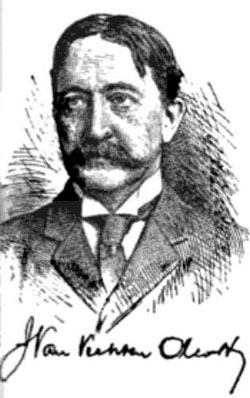
XXX |
|
Rep. Jacob Van Vechten Olcott(sketch above), a NYCer born May 17, 1856; educated in the public schools (including the Mary's and CCNY, graduated Columbia College Law School in May 1877.
A member of the NYC Civil Service Commission 1895-1897 and a St. Luke’s Hospital trustee and vice president, he elected as a Republican to the 59th, 60th, and 61st Congresses (March 4, 1905-March 3, 1911) but was not a candidate for renomination in 1910.
He continued his law practice until his death June 1, 1940. Burial was in Greenwood Cemetery, Brooklyn.
The sketch appeared in the National Cyclopaedia of American Biography published by J. T. White in 1910. To access, click image above.
Use browser's "back" button to return.
|
| Both Hanus and Aldcroft had to be fully aware that the Navy earlier in the year had turned down the Chamber of Commerce request in April for the Hartford or some other sail-and-steam vessel to be made available. They surely hoped the Republican Representative from New York, a member of Congressional committees relevant to sea commerce, could be enlisted in helping obtain a replacement training ship.
In January (NYT 1/10/1907), school board president Winthrop, the board's nuatical training committee chairman Aldcroft, schools superintendent William H. Maxwell and Chamber of Commerce representatives formed a committee to meet with President Theodore Roosevelt in Washington, D.C. to enlist his help in getting a new vessel to replace old St. Mary's.
During autumn of 1907, their ship came in.
Was success due to - intervention by the alumnus Congressman?
- or Aldcroft's vigorous chairmanship of the school board's nautical committee?
- or the fiesty combativeness of Capt. Hanus?
- or the re-engagement of the Chamber of Commerce?
- or the united front of the school board, Chamber and Maritime Association?
- or the formation only three years earlier of an active alumni association?
- or the desperateness of the aged St. Mary's physical condition?
- or President Roosevelt's not wanting the political embarrassment of a nautical school subscription drive begging money for a ship because the Navy wouldn't help?
Likely answer: all of the above.
NY Got Gunboat Intended for Mass. Naval Militia
Discussions involving the Navy and the NYC Board of Education concluded in September with agreement that the gunboat Newport would be delivered into the custody of the state which, in turn, would place it in the school board's care and control as a training vessel.
|
XXX
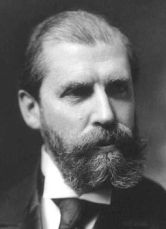 XXX XXX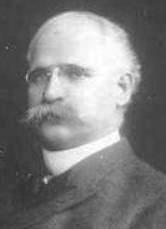
XXX |
|
NY Gov. Hughes, left, asked Navy Secretary Metcalf, right, for the Newport in a formal communication needed under federal law to permit that military agency to loan the state a Navy vessel for maritime training purposes.
Charles Evans Hughes' long and distinquished career -- reformer Governor, U.S. Supreme Court Justice, GOP Presidential candidate, Chief Justice of U.S. -- included service as Harding and Coolidge's Secretary of State.
In that capacity, he presided over the first international disarmament conference Nov. 1921 - Feb. 1922, aka the Washington Naval Conference. Historians still debate whether it helped preserve peace in the Pacific in the 1920s at the price of enabling Japanese naval build-up leading to Pearl Harbor and WWII.
Victor Howard Metcalf served as a US Congressman from California from 1899 to 1904, as U.S. Secretary of Commerce and Labor from 1904 to 1906, and as U.S. Secretary of the Navy from 1906 to 1908. Information and image from Find A Grave website. To access, click his image above.
Use browser's "back" button to return.
|
| Republican Gov. Charles Evans Hughes performed his role of formally requesting loan of the ship from the Secretary of the Navy Victor Howard Metcalf and delegating the State Adjutant Gen. Nelson H. Henry to appoint officers from NY's Naval Milita to receive it.
Lieuts. Kingsley L. Martin and Charles O. Brinkerhoff were so designated. They oversaw its transport from the Portsmouth Navy Yard to the Brooklyn Navy Yard where transfer to the school board took place in October of 1907 after the last St. Mary's graduating class received their diplomas aboard the old ship.
That commencement took place about three weeks after the vessel's last cruise of its 33 years as the New York Nautical School's training ship. It also was its longest cruise in that capacity, Portugal's Madeira being the furtherest foreign port destination.
The NYT 1907 stories about the loan of the Newport to the New York Nautical School -- Sept. 21 and 27, Oct. 4-- did not explain how the ship, that had then only recently been recommissioned for assignment to the Massachusettes Naval Militia, suddenly three months later came to be available for more or less permanent assignment as NY's school ship. The assignment actually lasted 23 years.
|

